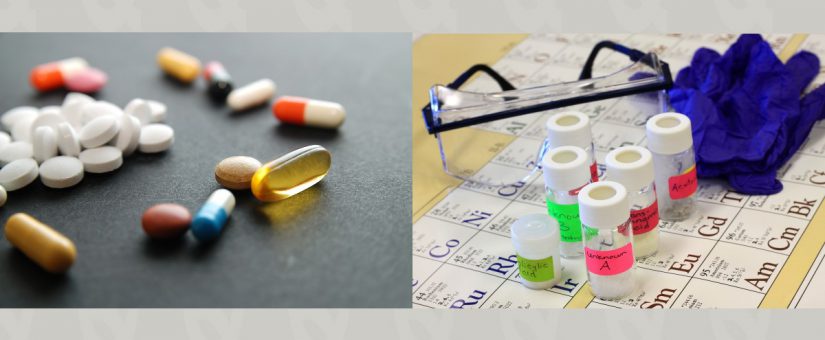High Quality Testing Of Drug Substances & Drug Products
Stability testing is utilized to determine if the quality of a drug substance or drug product is altered over time by various environmental factors, such as light, temperature, and humidity. A drug “substance,” often referred to as an Active Pharmaceutical Ingredient (API), is defined as the unformulated material that may subsequently be formulated with excipients to produce a dosage form. A drug “product” is the formulated mixture of the drug substance and excipients comprising the final marketed dosage form.
For a drug substance, stability testing determines the “re-test period,” the timeframe during which the drug substance is expected to remain within its specification, and therefore can be used in the manufacture of a given drug product. After the established re-test period has elapsed, a drug substance can only be used if additional specification testing is performed, the material passes inspection, and the substance is distributed soon after meeting acceptance criteria.
Determining The Shelf Life of Drug Products
For a drug product, stability testing determines the shelf-life of the product by establishing the duration for which the product is safe to use and retains therapeutic value according to the level of the active ingredient(s).
During a stability study, materials are stored at various temperature and humidity conditions and samples are pulled at predetermined time points and subjected to a battery of tests that may include: an identification test, assay, physical tests, microbiological limits, and preservative effectiveness testing, using appropriately validated methods and/or recognized compendial methods. Acceptance criteria are stipulated before initialization of the study, and if a product fails to meet specifications at any time point, the stability study may be halted and restarted after reformulation or other modifications have occurred.
ICH Stability Testing Guidance
The primary stability testing guidance document for drug substances and products marketed in Japan, Europe, and the United States is the International Conference on Harmonization (ICH) of Technical Requirements for Registration of Pharmaceuticals for Human Use, ICH Harmonized Tripartite Guideline, Stability Testing of New Drug Substances and Products – Q1A(R2).
For a drug substance stability study, the ICH guidance recommends utilizing a minimum of three batches of product. The batches should be manufactured to a minimum of pilot scale. A “pilot scale” batch is one produced by a procedure fully representative of and simulating that to be applied to a full production scale batch. The substance should be stored and tested using the same packaging and materials as the intended finished product.
For a drug product, data from stability studies should be provided on at least three primary batches of the same formulation and packaged in the same container closure system as intended for distribution. Two of the three batches should be at least pilot scale batches, and the third one can be smaller if justified. Batches of the drug product should be manufactured using different batches of the drug substance.
Recommended Storage Conditions
The recommended storage conditions stipulated in the guidance were developed based on the climates of the three regions represented: US, Europe, and Japan. Suggested storage conditions may vary in other climatic zones throughout the world. The storage condition for long-term (real-time) is 25°C ± 2°C/60% Relative Humidity (RH) ± 5% RH. Accelerated conditions are 40°C ± 2°C/75% RH ± 5% RH. Variations of storage conditions may be acceptable if the manufacturer can justify the change based on product knowledge or other factors. Potential reasons for altering the recommended storage conditions are alternative dosage forms or diverse product types such as biotechnological/biological drugs.
For long-term studies, the testing frequency should be sufficient to establish the stability profile of the product. For products with a proposed shelf life of at least 12 months, the frequency of testing at the long-term storage condition should usually be every 3 months over the first year, every 6 months over the second year, and annually after that through the proposed shelf life.
The use of accelerated storage conditions, typically elevated temperature and humidity, can provide a snapshot of how the substance or product may change outside the recommended storage conditions (e.g., during transport) as well as providing an indicator of shelf-life before acquiring the results of a 2 or 3-year study stored at optimal conditions. It is recommended to submit the real-time data along with the accelerated data when applying for approval and to continue the real-time study to the end of the usable shelf-life of the product.
At accelerated storage conditions, a minimum of three time points is recommended, including the initial and final time points (e.g., 0, 3, and 6 months), from a 6-month study. If a significant product change occurs at 25oC (accelerated), the product should be placed in intermediate storage condition at 30oC for a minimum of four time points, including the initial and final time points (e.g., 0, 6, 9, 12 months), from a 12-month study is recommended.
Acceptance Criteria for Release Testing
Stability testing can also be used to determine acceptance criteria for release testing. Specifications that remain stable throughout stability storage and evaluation may not need to be included in release testing, whereas more fluctuating measurements may suggest requiring either batch-by-batch or periodic testing of the ready-for-market drug product before distribution.
If you are looking for a reliable partner for stability testing for your pharmaceutical products, contact us today.
See more about our stability testing services here.





